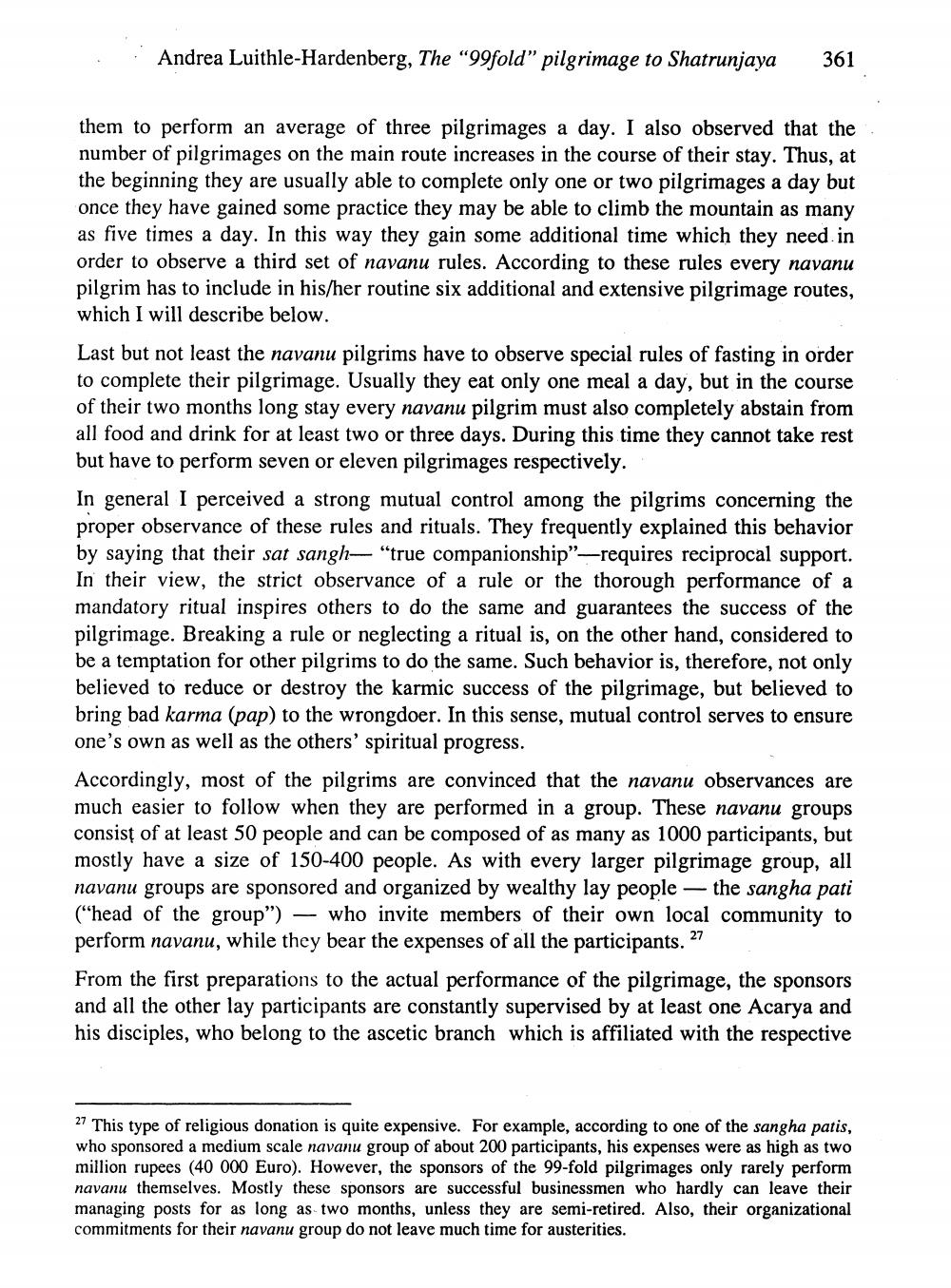________________
.
: Andrea Luithle-Hardenberg, The “99fold” pilgrimage to Shatrunjaya
361
them to perform an average of three pilgrimages a day. I also observed that the number of pilgrimages on the main route increases in the course of their stay. Thus, at the beginning they are usually able to complete only one or two pilgrimages a day but once they have gained some practice they may be able to climb the mountain as many as five times a day. In this way they gain some additional time which they need in order to observe a third set of navanu rules. According to these rules every navanu pilgrim has to include in his/her routine six additional and extensive pilgrimage routes, which I will describe below. Last but not least the navanu pilgrims have to observe special rules of fasting in order to complete their pilgrimage. Usually they eat only one meal a day, but in the course of their two months long stay every navanu pilgrim must also completely abstain from all food and drink for at least two or three days. During this time they cannot take rest but have to perform seven or eleven pilgrimages respectively. In general I perceived a strong mutual control among the pilgrims concerning the proper observance of these rules and rituals. They frequently explained this behavior by saying that their sat sangh- "true companionship"-requires reciprocal support. In their view, the strict observance of a rule or the thorough performance of a mandatory ritual inspires others to do the same and guarantees the success of the pilgrimage. Breaking a rule or neglecting a ritual is, on the other hand, considered to be a temptation for other pilgrims to do the same. Such behavior is, therefore, not only believed to reduce or destroy the karmic success of the pilgrimage, but believed to bring bad karma (pap) to the wrongdoer. In this sense, mutual control serves to ensure one's own as well as the others' spiritual progress. Accordingly, most of the pilgrims are convinced that the navanu observances are much easier to follow when they are performed in a group. These navanu groups consist of at least 50 people and can be composed of as many as 1000 participants, but mostly have a size of 150-400 people. As with every larger pilgrimage group, all navanu groups are sponsored and organized by wealthy lay people — the sangha pati ("head of the group") — who invite members of their own local community to perform navanu, while they bear the expenses of all the participants. 27 From the first preparations to the actual performance of the pilgrimage, the sponsors and all the other lay participants are constantly supervised by at least one Acarya and his disciples, who belong to the ascetic branch which is affiliated with the respective
27 This type of religious donation is quite expensive. For example, according to one of the sangha patis, who sponsored a medium scale navanu group of about 200 participants, his expenses were as high as two million rupees (40 000 Euro). However, the sponsors of the 99-fold pilgrimages only rarely perform navanu themselves. Mostly these sponsors are successful businessmen who hardly can leave their managing posts for as long as two months, unless they are semi-retired. Also, their organizational commitments for their navanu group do not leave much time for austerities.




